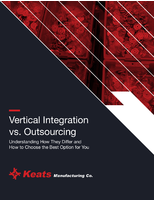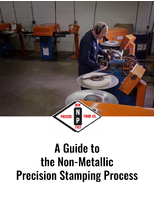We Know the Difference Between Pass and Fail
In our second monthly newsletter, we hope to provide you with some useful information about how to make the product certification process more efficient, faster, and less costly.
Lighting Products - Make sure to get your LED Array Recognized!
In the process of obtaining a certification for most end-products, Nationally Recognized Testing Laboratories (NRTLs) such as UL, CSA, Intertek and others, have programs where safety-critical components can be separately evaluated. This is referred to as component "Recognition". Each recognized component generally has a separate file - just like a listed end product - except that recognized components always come with certain caveats (called "Conditions of Acceptability", or "C of As"). The result is that, when seeking a listing for an end product, recognized components will generally not have to be individually evaluated.
Meet with us this year at Lightfair in Las Vegas May 9-11
Contact us at 1-877-804-3066 or via email to schedule a free consultation and discuss how we can help get you through the approval process in less time, and for less money
If your product does have a safety-critical component that is not recognized, it is always possible to evaluate it as part of the process of certifying the end-product, but this adds time and money.
For LED lighting manufacturers, we commonly see the Power Supplies, Connectors, Drivers, Printed Circuit Boards, and Wiring all need some form of Recognition. The most often overlooked component, however, is the LED Array itself. For a small added fee (and usually no additional extra testing time), we recommend manufacturers seek recognition on the LED Array. This will allow for that same LED array to be used in other products without the need for further evaluation, saving time and money on certification of future lighting fixtures. Contact us to find out more about the requirements of UL 8750.
Medical Devices - Are you ready for the Third Edition of UL/IEC 60601?
The transition from the current edition of the product safety standard for medical devices (IEC 60601-1) is underway. Depending on where you sell your products, you should check to be sure that your products will still be compliant. 60601 is a harmonized standard, meaning that the requirements are generally the same around the world (with some national deviations), but the important thing to know is that the 3rd Edition is being adopted at different times in different regions of the world. The biggest difference between the 2nd and 3rd Editions is the requirement of a Risk Management System. If you're not already familiar with Risk Assessments, FMEA's and other tools needed for a compliant Risk Management System - you need to be - and we can help.
In the European Union and Canada, Medical Devices MUST be certified to the 3rd Edition by June of this year. Some products may be self-declared under the CE certification scheme. Other products may need a Notified Body to confirm compliance.
In the United States, the Federal Drug Administration (FDA) will mandate that most medical devices meet the requirements of the 3rd Edition by July of 2013, however the Occupational Safety and Health Administration (OSHA) has not yet determined when or if it will authorize NRTLs to certify to the 3rd Edition for the purposes of passing local electrical inspections. For this reason, many manufacturers that sell medical devices in the US are pursuing certification to BOTH the 2nd and 3rd Edition of 60601.
Sounds confusing? It is! Contact us to help you understand what you need to do to make sure your products are meeting the right compliance requirements.
Class 2 Power Supplies for LED Lighting Products
One of the first questions we always ask manufacturers of LED lighting products, is: "are you using a Class 2 power supply?" This answer to this question can often make a difference of thousands of dollars when it comes to obtaining NRTL certification.
Class 2 is generally defined as 42.2 Volts-peak (30Vrms), 60VDC, and 8 Amps after one minute. The Power Supply must provide a physical separation between Primary, or line, voltage - and Secondary, or low, voltage (such as with a split bobbin transformer). This means that the risk of fire or shock is greatly reduced, and there is no need for a fire or electrical enclosure on the LED Array.
This can save a great deal of evaluation and testing on the LED Array itself. There will be no need for mechanical or excessive temperature testing (of course, always be sure that the RTI on the Printed Circuit Board is not exceeded). In addition, the LEDs themselves and the wiring can be accessible, and there are generally very little - if any - spacing requirements on the Printed Circuit Board. Finally any plastic enclosure material on the LED lens will generally not have to have a UL flame rating.
This is only one of the tips and tricks that can help you save time and money in the certification process. Contact us to find out more




